The saola, often referred to as the “Asian Unicorn,” is one of the rarest and most enigmatic creatures in the world. Native to the dense forests of Laos and Vietnam, this elusive species symbolizes the delicate balance of Southeast Asia’s biodiversity. In this article, we’ll explore the saola’s unique traits, its importance to the ecosystem, and the challenges it faces in the wild.
In 1992, the world was stunned by the discovery of the saola (Pseudoryx nghetinhensis), a new mammal species that had evaded human eyes for centuries. Its unicorn-like appearance and mysterious nature quickly captured global attention.
However, this remarkable creature is now critically endangered, sparking urgent conservation efforts to save it. Let’s delve into the fascinating story of the saola, its habitat, and what we can do to protect it.
What Is a Saola?
Physical Characteristics
The saola is a medium-sized herbivore, often described as a mix between an antelope and a deer. Key features include:
- Long, slender, and almost straight horns that can grow up to 50 cm.
- A dark brown coat with striking white facial markings.
- A weight range of 80–100 kg (176–220 lbs).
Unlike mythical unicorns, both male and female saolas have horns, adding to their distinctive charm.
Habitat and Range
Saolas are endemic to the Annamite Mountains, which straddle the borders of Laos and Vietnam. They inhabit dense, evergreen forests, thriving near freshwater sources. Unfortunately, their natural range is rapidly shrinking due to human activities.
Behavior and Diet
This elusive animal is primarily nocturnal and solitary. Its diet consists of:
- Leaves from fig and other trees.
- Ferns and grasses found near streams.
- Seasonal fruits and vegetation.
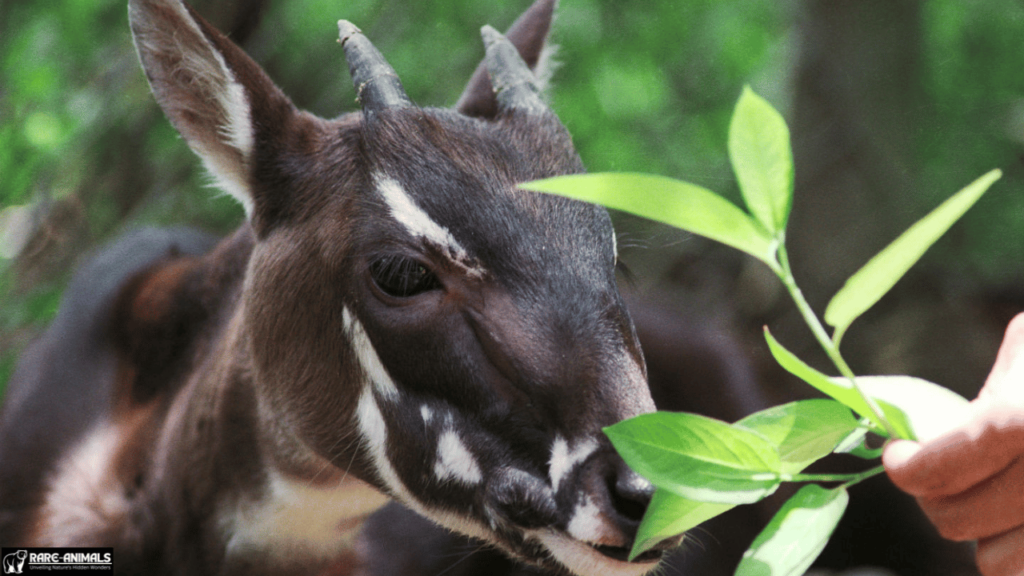
Why Is the Saola So Rare?
Discovery and Initial Research
The saola was first identified in 1992 when a set of horns was found in a hunter’s home in Laos. Despite ongoing efforts, fewer than a dozen saolas have been observed alive, making it one of the rarest mammals on Earth.
Threats to Survival
The saola faces numerous threats, including:
- Habitat loss due to deforestation for agriculture and infrastructure development.
- Hunting and poaching, often as bycatch in snares intended for other animals.
- Limited genetic diversity, which exacerbates their vulnerability to diseases.
Key Fact: Recent estimates suggest there may be fewer than 100 saolas remaining in the wild.
The Importance of Saola Conservation
Ecological Significance
The saola plays a critical role in maintaining the health of its ecosystem. As a herbivore, it helps control plant growth and fosters a balanced food chain.
Cultural Value
In local folklore, the saola is revered as a symbol of grace and resilience. Its protection has united conservationists and indigenous communities in a shared mission.
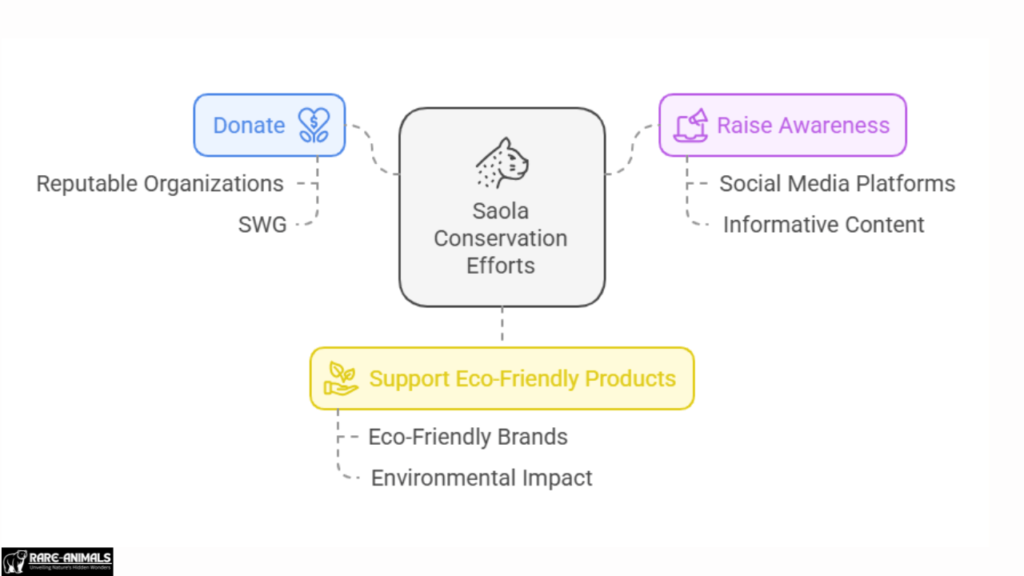
Efforts to Save the Saola
Conservation Strategies
Several initiatives are underway to safeguard the saola:
- Protected Areas: Establishing national parks and reserves in the Annamite region.
- Anti-Poaching Measures: Deploying patrol teams to remove snares and reduce illegal hunting.
- Captive Breeding Programs: Developing facilities to breed and reintroduce saolas into the wild.
Community Involvement
Empowering local communities is vital for long-term success. This includes:
- Educating residents about the saola’s importance.
- Offering sustainable livelihood alternatives to reduce dependence on forest resources.
International Collaboration
Organizations like the Saola Working Group (SWG) and the WWF are leading global efforts to save this species through funding, research, and advocacy.
How Can You Help?
Even if you’re far from Southeast Asia, you can contribute to saola conservation:
- Donate to reputable organizations like the SWG.
- Raise awareness by sharing information about the saola on social media.
- Support eco-friendly products to reduce deforestation and habitat loss.
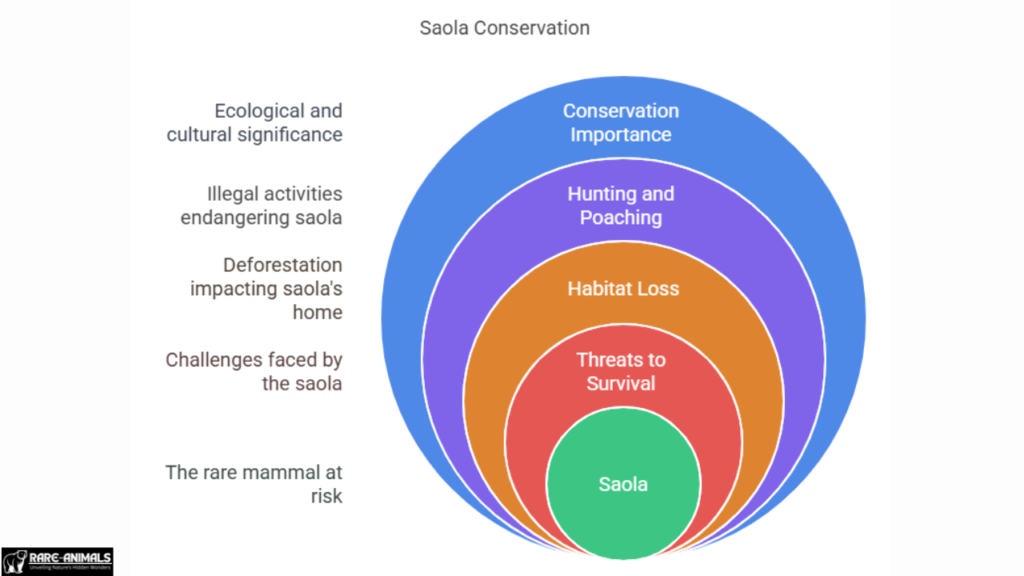
FAQs
What Makes the Saola Unique?
The saola is unique due to its rarity, striking appearance, and limited distribution, making it a biological treasure.
Why Is It Called the “Asian Unicorn”?
The saola’s long, straight horns resemble the mythical unicorn, and its elusive nature adds to the mystique.
Can Saolas Be Seen in Zoos?
No. There are currently no saolas in captivity, as all known individuals reside in the wild.
What Are the Chances of Saving the Saola?
While challenging, conservation efforts give hope. Strong international collaboration is key to preventing extinction.
How Can Schools Get Involved in Saola Conservation?
Schools can participate by organizing awareness campaigns, fundraising events, and collaborating with conservation groups.
Conclusion
The saola’s story is a poignant reminder of nature’s fragility and humanity’s responsibility to protect it. Saving the “Asian Unicorn” requires global effort, but every step counts. Whether you’re a conservationist, policymaker, or eco-conscious individual, your actions can help ensure that the saola thrives for generations to come.
Join the movement to protect Southeast Asia’s forests and their incredible biodiversity. Share this article, donate to conservation efforts, and be part of the solution today.

Alveena is an experienced content writer with a knack for crafting engaging and insightful pieces. She thrives on breaking down complex ideas and presenting them as clear, captivating content that resonates with readers.

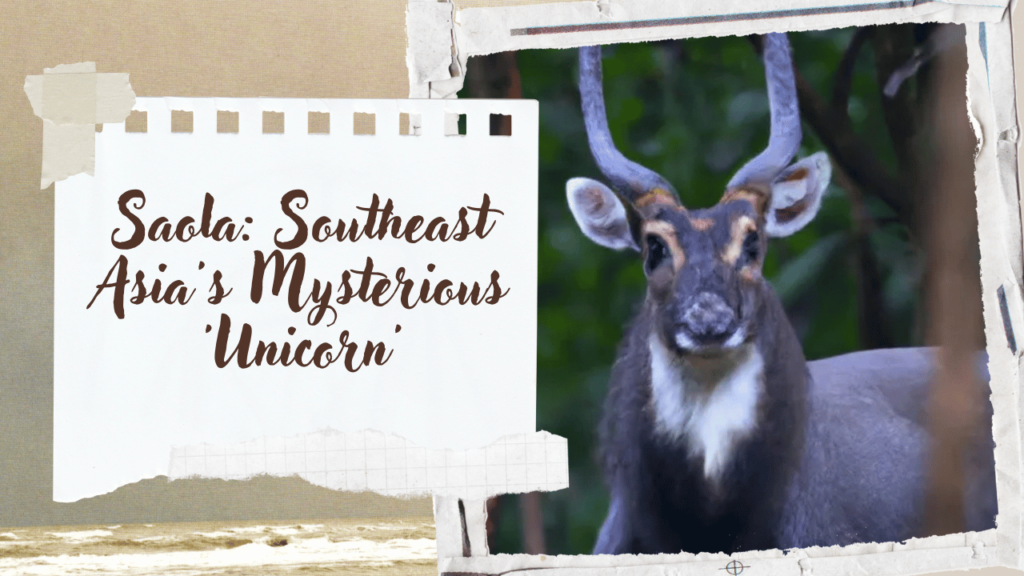

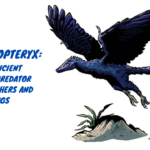




3 thoughts on “Saola: Southeast Asia’s Mysterious ‘Unicorn’”